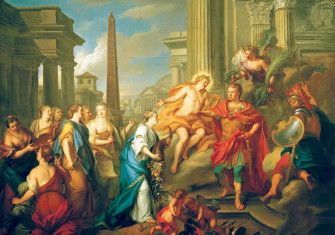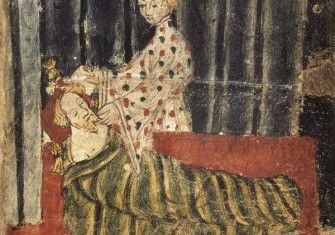New Year Knowns and Unknowns
As we take stock of the past year, the most famous event in English history reminds us of our inability to foresee the future.

January is a month of doors and thresholds: the month of Janus, god of beginnings and endings, transitions and entrance ways, who looks both backwards and forwards. In medieval calendars, January is typically represented by an image of the double-faced Janus sitting at a feast, warming himself against the winter chill. Having two faces means he gets to enjoy twice the feasting – he is often shown holding a plate of food up to one mouth, a cup of drink to the other. It is a cheerful image with which to begin a new year.







